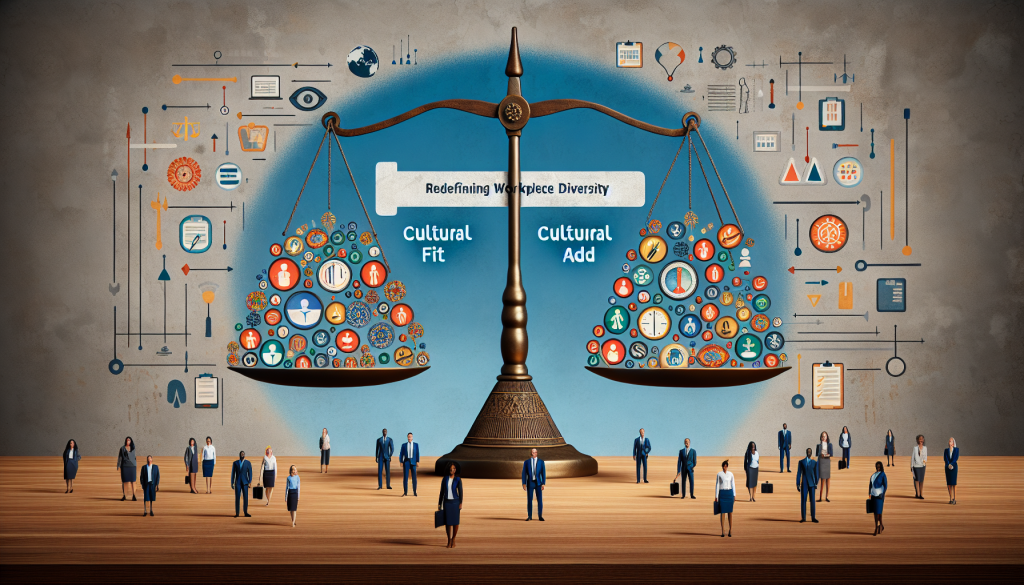
Cultural Fit vs. Cultural Add: Redefining Workplace Diversity
Culture plays a significant role in our daily lives, especially in the workplace. In recent years, there has been a lot of conversation around the topic of diversity and inclusion in the workplace. Companies have been striving to create a diverse and inclusive work environment to attract top talent and foster a sense of belonging for all employees. However, there has been a shift in the approach to achieving diversity in the workplace, from focusing solely on cultural fit to also considering cultural add. In this article, we will explore the difference between cultural fit and cultural add and how redefining workplace diversity can lead to a more inclusive and successful team.
Cultural Fit: Finding the Perfect Match
In the past, cultural fit was the primary focus of companies when it came to hiring new employees. This concept refers to the match between an individual’s values, beliefs, attitudes, and behavior and those of the company. A strong cultural fit was seen as crucial in ensuring a harmonious and cohesive work environment. Employers looked for candidates who shared similar interests and outlooks, with the belief that this would lead to better collaboration and improved performance.
The Problem with Cultural Fit
While cultural fit may seem like a good idea in theory, this approach to diversity in the workplace has been met with criticism and backlash. It has been observed that hiring based on cultural fit can lead to a lack of diversity in the workplace, as it often results in hiring candidates who are similar to the existing team. This can lead to a homogenous work culture, where different perspectives and ideas are not welcomed or considered. As a result, diverse candidates may feel excluded and struggle to fit in, leading to high turnover rates and a loss of valuable talent.
Cultural Add: Embracing Differences
In recent years, a new approach to diversity has emerged – cultural add. This concept focuses on hiring individuals who bring unique experiences, skills, and perspectives to the team, rather than just fitting into the existing culture. Cultural add acknowledges that everyone has something valuable to contribute, regardless of their background, and seeks to create a diverse and inclusive work environment that embraces these differences.
The Benefits of Cultural Add
By shifting the focus from cultural fit to cultural add, companies can reap numerous benefits. A diverse and inclusive work environment not only attracts top talent but also fosters creativity, innovation, and problem-solving. When employees from different backgrounds come together, there is an exchange of ideas and perspectives, leading to better decision-making and increased productivity. Additionally, a diverse team can better understand and cater to the needs of a diverse customer base, leading to a competitive advantage in the market.
Redefining Workplace Diversity
It is time for companies to rethink their approach to achieving diversity in the workplace. While cultural fit does have its merits, it should not be the sole focus when hiring. Instead, companies should strive for cultural add, where differences are celebrated and embraced. This can be achieved by promoting inclusivity and creating a safe space for employees to share their unique perspectives, experiences, and ideas.
Conclusion
In today’s global and interconnected world, diversity in the workplace is more important than ever. By redefining workplace diversity and shifting the focus from cultural fit to cultural add, companies can create a more inclusive and successful team. Embracing differences and promoting inclusivity not only benefits the company but also leads to a more fulfilling and satisfying work experience for all employees.
